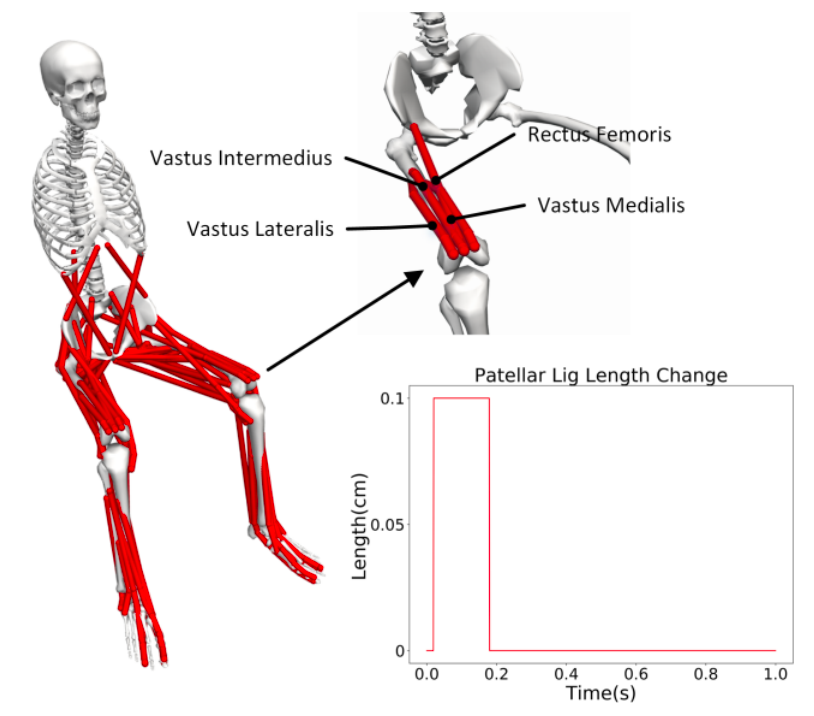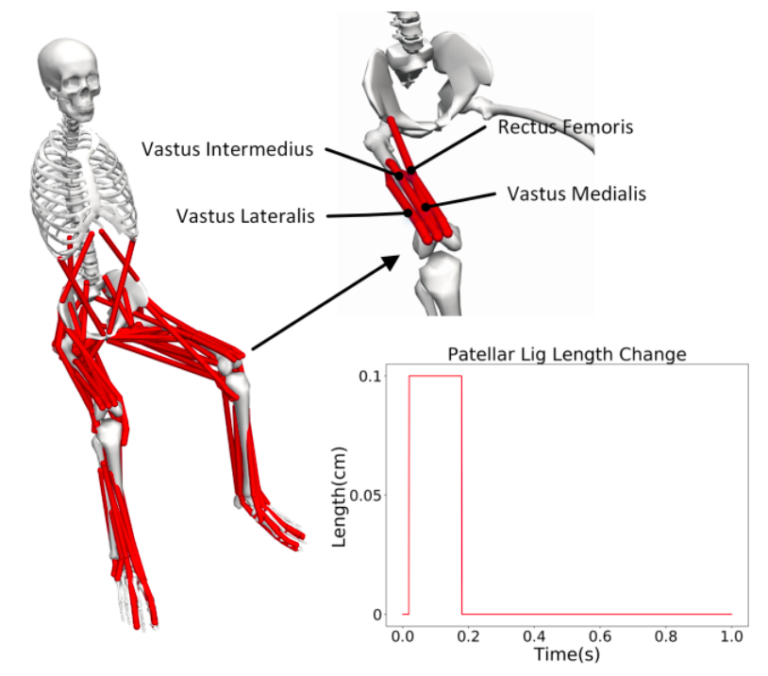
Proprioceptive senses play an important role in human body reflex and movement, so far implementing physiological mathematical models of proprioceptors in the musculoskeletal model and investigating their effects have not been sufficiently investigated. The purpose of the present study was to establish a compact framework for a lower limb musculoskeletal model by considering both ascending signals from central nervous system and descending feedback neural signal from physiologically realistic proprioceptors and evaluate it with progressive experimental data as well as investigating the effects of the proprioceptive feedback on the human movement. Methods: The simulation framework was established by combining a lower limb musculoskeletal model, the forward dynamic tool from OpenSim codes, and an executive program based on Python codes. The physiological mathematical models of the muscle spindle and Golgi tendon organs were included in the feedback control loop for the model. The model was evaluated through both previous literature data and currently implemented volunteer reflex experiments from the neural organ level to the monosynaptic reflex loop, and finally the complicated movement, such as the firing rate of the proprioceptors, the knee-jerk reflex, and the normal gait. Simultaneously, the effects of the proprioceptors on human normal gait were initially investigated. Results: The reliability of the framework was properly evaluated by comparing the experimental data of neural firing rate, electromyography signals, and joint kinematics. The gait analysis indicated that the introduction of the proprioceptors in the motor control loop can substantially resist the external disturbance. Conclusion: The established framework has been evaluated at different levels, and it can be extended and applied to different musculoskeletal models for human movement analysis and evaluate the effects of the proprioceptors on them.

